![]()
![]()
![]()
Use LEFT and RIGHT arrow keys to navigate between flashcards;
Use UP and DOWN arrow keys to flip the card;
H to show hint;
A reads text to speech;
5 Cards in this Set
- Front
- Back
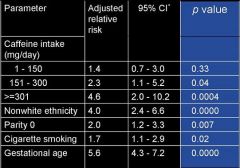
in the above Fictitious data for caffeine intake on low birth weight babies, looking at the p values, and use alpha = .05
looking at drinking 1-150 mg of coffee per day, should we accept or reject the null hypothesis? |

accept the null hypothesis
|
|
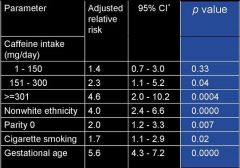
in the above Fictitious data for caffeine intake on low birth weight babies, looking at the p values, and use alpha = .05
looking at drinking 151-300 mg of coffee per day, should we accept or reject the null hypothesis? |

reject the null hypothesis because .04 is less than .05 (our alpha)
|
|
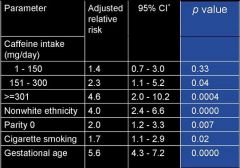
in the above Fictitious data for ethnicity on low birth weight babies, looking at the p values, and use alpha = .05
looking at nonwhite ethnicity: 1. what is the null hypothesis 2. do we accept or reject the null hypothesis? |

1. being nonwhite does not contribute to low birthrate babies
2. reject the null hypothesis |
|
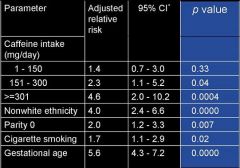
in the above Fictitious data for caffeine intake on low birth weight babies, looking at the confidence intervals:
look at >=300 mg coffee per day, should we reject or accept the null hypothesis? and why: |

reject
the null hypothesis is outside the confidence interval |
|
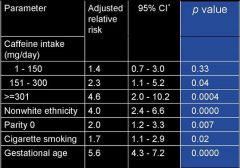
in the above Fictitious data for caffeine intake on low birth weight babies, looking at the confidence intervals:
look at 1-150 mg coffee per day, should we reject or accept the null hypothesis? and why: |

accept the null hypothesis
the null hypothesis is contained in the confidence interval then the null hypothesis is true, accept it. The results are not statistically significant. |

